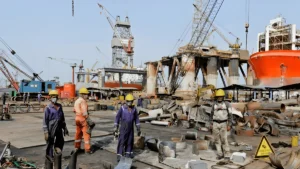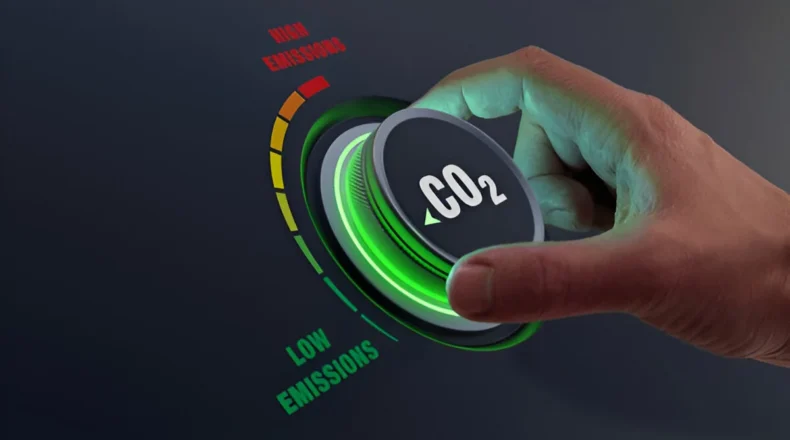How ship recycling services reduce CO₂ emissions through sustainable recycling, circular economy practices, and eco-friendly innovations.
Understanding the Climate Challenge
The maritime industry plays a vital role in global trade, but it also contributes significantly to greenhouse gas emissions. Beyond the emissions released while ships are in operation, what happens to them at the end of their life cycle also matters. The way ships are dismantled and their materials reused can have a measurable effect on carbon dioxide (CO₂) reduction.
That’s where ship recycling services are making a difference. By focusing on sustainable recycling practices, the industry not only reduces waste but also cuts down on the demand for carbon-intensive processes like steel production.

Why Ship Recycling Matters for Emissions
Ships are enormous structures, often weighing tens of thousands of tons, with the majority of their material being steel. Recycling this steel has multiple environmental benefits:
-
Less energy-intensive than mining and smelting – Producing steel from scrap uses up to 74% less energy compared to primary production.
-
Reduced CO₂ footprint – Every ton of recycled steel prevents approximately 1.5 tons of CO₂ emissions.
-
Lower landfill burden – Reusing parts and materials minimizes waste and prevents environmental degradation.
-
Promotes circular economy – Ship recycling ensures valuable resources are put back into use rather than discarded.
The Indian Context
India has become one of the global leaders in ship recycling, with Alang in Gujarat being one of the largest ship-breaking yards worldwide. The industry here is increasingly aligning with international environmental standards and sustainable practices.
The contribution of ship recycling services in India to reducing CO₂ emissions is particularly significant because:
-
The country recycles a large percentage of global end-of-life ships.
-
Recycled steel supports domestic industries like construction, reducing dependence on imported, newly manufactured steel.
-
Updated safety and environmental guidelines are improving the overall ecological impact of the sector.
How Exactly Ship Recycling Services Reduce CO₂ Emissions
1. Recycled Steel = Reduced Carbon Footprint
By using scrap steel from ships instead of producing new steel, emissions from mining, processing, and transportation are avoided.
2. Reuse of Non-Metal Materials
Ship recycling doesn’t just involve steel. Items such as wood, glass, and machinery can also be refurbished and reused, reducing the need for manufacturing replacements.
3. Energy Savings in the Supply Chain
Recycling drastically lowers the energy needed for raw material extraction, smelting, and refining, which translates into reduced fossil fuel use.
4. Supporting a Circular Economy
When old ships are dismantled, their parts feed directly into the economy again, avoiding waste and minimizing the carbon footprint of creating entirely new products.
Latest Trends Driving Green Ship Recycling
-
Hong Kong Convention Enforcement (2025) – A global framework promoting environmentally sound ship recycling practices.
-
Digital Monitoring – Advanced tracking systems ensure compliance with environmental norms and reduce hidden emissions.
-
Eco-friendly Dismantling Techniques – Safer cutting methods and waste management systems improve sustainability.
-
International Collaboration – Partnerships between shipping companies, governments, and recyclers to encourage low-emission practices.
Environmental Benefits Beyond CO₂
The reduction of carbon emissions is just one part of the broader environmental benefits:
-
Less hazardous waste entering ecosystems
-
Reduced water pollution from oil, paint, and chemicals
-
Safer labor conditions with modernized facilities
-
Boost to green industries through a steady supply of recyclable materials
Bullet Summary: Why This Matters
-
Ship recycling saves energy compared to raw material production.
-
Each ton of recycled steel prevents tons of CO₂ from entering the atmosphere.
-
India’s role in global ship recycling contributes directly to emission reduction.
-
New regulations and innovations are pushing for greener, safer recycling methods.
FAQs on Ship Recycling and CO₂ Emissions
Q1. How much CO₂ can ship recycling save?
Recycling steel from one large vessel can prevent thousands of tons of CO₂ emissions, depending on the ship’s size and material composition.
Q2. Is ship recycling safe for the environment?
Yes, when done with modern safety measures and international compliance, it reduces both emissions and pollution.
Q3. Why is India a leader in ship recycling?
India has vast facilities like Alang and a strong workforce, making it one of the top global destinations for dismantling end-of-life ships sustainably.
Q4. What materials are commonly reused from ships?
Steel, aluminum, copper, wood, machinery, and even furniture are often refurbished and repurposed.
Q5. How does ship recycling support the circular economy?
It ensures that valuable materials re-enter industrial cycles, reducing the need for new resource extraction.
A Unique Perspective to Conclude
Ship recycling may not grab daily headlines, but its impact on reducing global emissions is undeniable. By turning old vessels into resources for new industries, the process transforms what could have been waste into a solution for climate change.
As international standards evolve and eco-friendly innovations become mainstream, ship recycling services will continue to be a cornerstone of both sustainability and carbon reduction efforts.
Closing Thought
Turning old ships into a greener future is not just about recycling—it’s about reimagining the way industries contribute to a low-carbon world.


